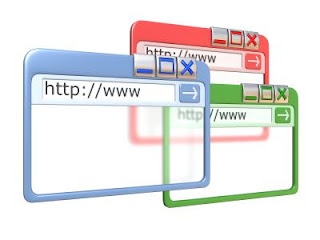
The ephemeral store, or temporary shop is a marketing approach based on the opening of outlets for short durations. A temporary boutique is similar to a conventional BOOTH, but temporarily. The principle is to appear and then disappear after a few days, weeks or months.
In Internet
One or a pop up, sometimes called intruse1 window or pop-up window is a secondary window that appears, without having been requested by the user, before the main browser window when browsing the Internet.
The word pop was once recommended by a French computer terminology commission.
This method is commonly used to display advertisements or warning, for example, the response to a private message forum. However, some sites are designed according to the principle of a conventional page containing only a background image and link style "enter" which opens the site itself is actually designed in a pop-up window type .
Some sites containing related features, such as a music player or video, that require the use of pop-up system, because these features are embarking on a pop-up window.

Types
The intruders "conventional" open in a new browser window. However, given the proliferation of anti-adware software, new techniques are used to circumvent protections, including intrusion Flash or DHTML within the web page.
, A distinction is made between the pop-up, which open above the parent browser, and pop-under ads, which open underneath, which makes them less intrusive.
These windows can also be intrusive intrusive files. These files can be installed beneath download other files Words, Works, Picture Manager.
Some open and remove automatically, without the knowledge of the user.
Modal or non-modal
Modal windows open over the application and does not allow the user to click on the window located "below". We must close the pop-up to regain access to the application to the browser.
In JavaScript, the modal pop-up is opened with the function:
window.showModalDialog (URL, winParams, props);
The non-modal windows open over the application but as they allow the user to click on the window "below", they can go "behind" the application at any time.
In JavaScript, non-modal pop-up is opened with the function:
window.open (URL, title, parameters);
These two types of window have different properties as regards their size and position. The non-modal pop-up has a reference to the calling window "opener" that does not exist in the modal case. We can divert this gap by passing a parameter to the modal pop-up a reference to the calling window: "this" or "window."
Example:
window.showModalDialog (URL, window, props);
and in the script of the pop-up is recovered in this reference dialogArguments:
if (window.dialogArguments) = {window.opener window.dialogArguments; }
Accessibility Web interfaces
Opening a link in a new window is problematic for accessibility when it can not be anticipated by user2: it then causes a change in navigation context that can disorient. For example, the opening of this new window and unable to return to the previous page via the browser history can be easily perceptible to the user of a screen reader.
Possible Protections
Separate programs were first developed to block pop-ups.
In modern browsers (Internet Explorer since version 6.0 SP2, Fire-fox, Opera, Safari, ..), this protection against these pop-ups is integrated and configurable.
It sometimes happened that people fail to see the desired page when it was presented as an intruder window. Browsers now know how to prevent the Internet and give it the means to open with a single click.
No comments:
Post a Comment